
Specialty vehicles contractor Oshkosh (NYSE:OSK) announced better-than-expected revenue in Q3 CY2024, with sales up 9.2% year on year to $2.74 billion. The company expects the full year’s revenue to be around $10.6 billion, close to analysts’ estimates. Its non-GAAP profit of $2.93 per share wasin line with analysts’ consensus estimates.
Is now the time to buy Oshkosh? Find out by accessing our full research report, it’s free.
Oshkosh (OSK) Q3 CY2024 Highlights:
- Revenue: $2.74 billion vs analyst estimates of $2.67 billion (2.8% beat)
- Adjusted EPS: $2.93 vs analyst expectations of $2.91 (in line)
- EBITDA: $318.6 million vs analyst estimates of $334.1 million (4.7% miss)
- The company dropped its revenue guidance for the full year to $10.6 billion at the midpoint from $10.7 billion, a 0.9% decrease
- Management lowered its full-year Adjusted EPS guidance to $11.35 at the midpoint, a 3.4% decrease
- Gross Margin (GAAP): 18.5%, in line with the same quarter last year
- Operating Margin: 9.7%, down from 11% in the same quarter last year
- EBITDA Margin: 11.6%, in line with the same quarter last year
- Free Cash Flow Margin: 9.9%, up from 2.7% in the same quarter last year
- Backlog: $14.32 billion at quarter end, down 9% year on year
- Market Capitalization: $7.02 billion
“We are pleased to report solid third quarter performance with revenue growth of 9.2 percent and an adjusted operating margin of 10.3 percent, leading to adjusted earnings per share of $2.93,” said John Pfeifer, president and chief executive officer of Oshkosh Corporation.
Company Overview
Oshkosh (NYSE:OSK) manufactures specialty vehicles for the defense, fire, emergency, and commercial industry, operating various brand subsidiaries within each industry.
Heavy Transportation Equipment
Heavy transportation equipment companies are investing in automated vehicles that increase efficiencies and connected machinery that collects actionable data. Some are also developing electric vehicles and mobility solutions to address customers’ concerns about carbon emissions, creating new sales opportunities. Additionally, they are increasingly offering automated equipment that increases efficiencies and connected machinery that collects actionable data. On the other hand, heavy transportation equipment companies are at the whim of economic cycles. Interest rates, for example, can greatly impact the construction and transport volumes that drive demand for these companies’ offerings.
Sales Growth
A company’s long-term performance can give signals about its business quality. Even a bad business can shine for one or two quarters, but a top-tier one grows for years. Over the last five years, Oshkosh grew its sales at a sluggish 4.2% compounded annual growth rate. This shows it failed to expand in any major way, a rough starting point for our analysis.
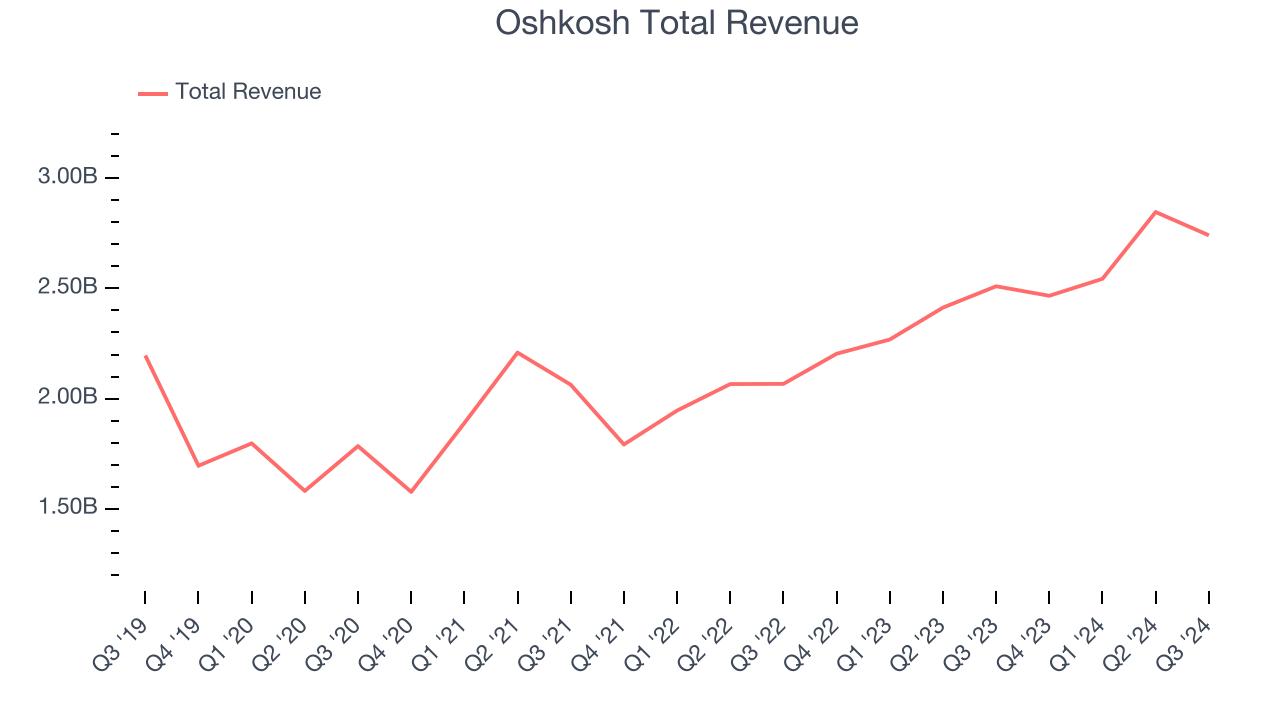
Long-term growth is the most important, but within industrials, a half-decade historical view may miss new industry trends or demand cycles. Oshkosh’s annualized revenue growth of 16% over the last two years is above its five-year trend, suggesting its demand recently accelerated. 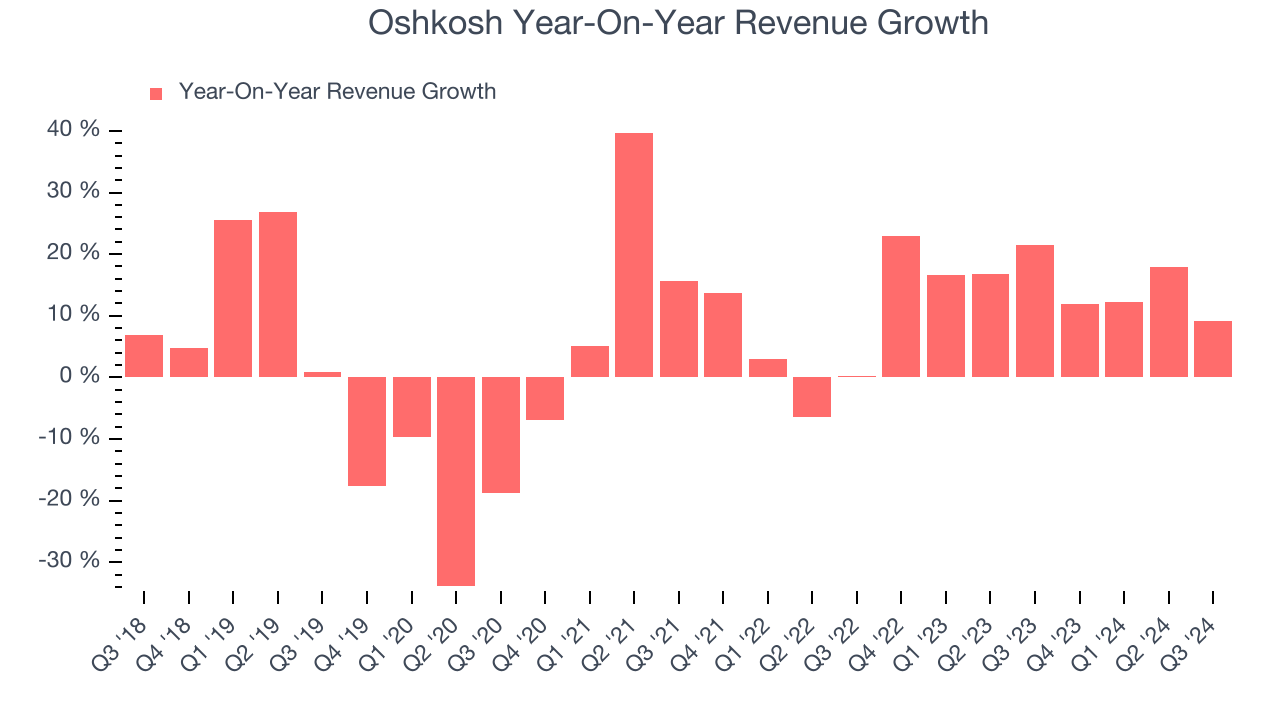
Oshkosh also reports its backlog, or the value of its outstanding orders that have not yet been executed or delivered. Oshkosh’s backlog reached $14.32 billion in the latest quarter and averaged 16% year-on-year growth over the last two years. Because this number is in line with its revenue growth, we can see the company effectively balanced its new order intake and fulfillment processes. 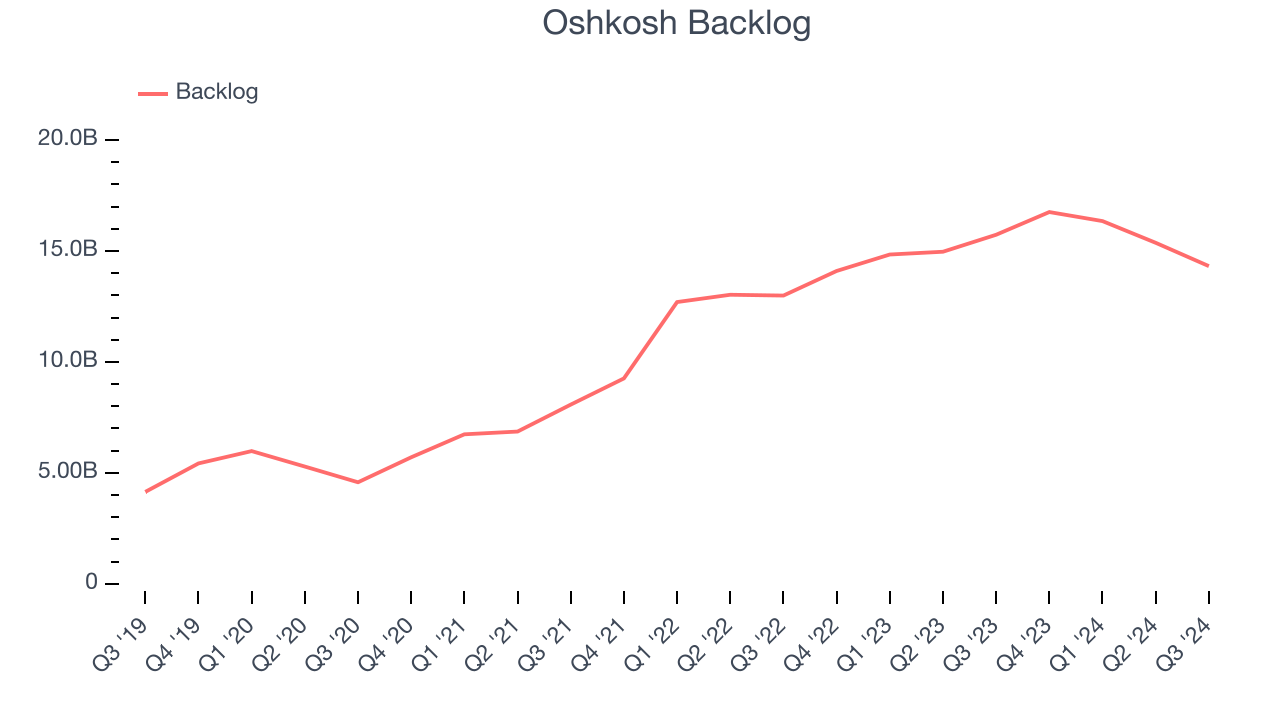
This quarter, Oshkosh reported year-on-year revenue growth of 9.2%, and its $2.74 billion of revenue exceeded Wall Street’s estimates by 2.8%.
Looking ahead, sell-side analysts expect revenue to decline 1.9% over the next 12 months, a deceleration versus the last two years. This projection is underwhelming and shows the market thinks its products and services will see some demand headwinds.
Today’s young investors won’t have read the timeless lessons in Gorilla Game: Picking Winners In High Technology because it was written more than 20 years ago when Microsoft and Apple were first establishing their supremacy. But if we apply the same principles, then enterprise software stocks leveraging their own generative AI capabilities may well be the Gorillas of the future. So, in that spirit, we are excited to present our Special Free Report on a profitable, fast-growing enterprise software stock that is already riding the automation wave and looking to catch the generative AI next.
Operating Margin
Oshkosh was profitable over the last five years but held back by its large cost base. Its average operating margin of 7.5% was weak for an industrials business. This result isn’t too surprising given its low gross margin as a starting point.
On the bright side, Oshkosh’s annual operating margin rose by 2.6 percentage points over the last five years.
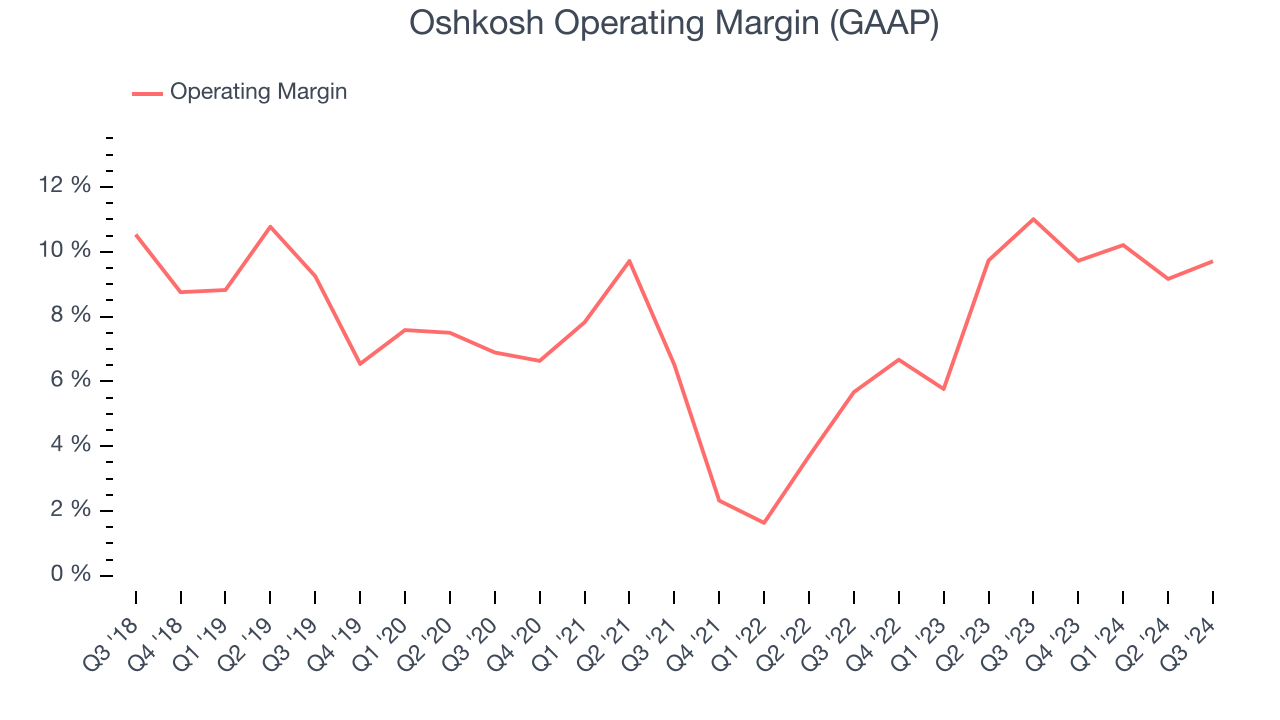
This quarter, Oshkosh generated an operating profit margin of 9.7%, down 1.3 percentage points year on year. Since Oshkosh’s operating margin decreased more than its gross margin, we can assume it was recently less efficient because expenses such as marketing, R&D, and administrative overhead increased.
Earnings Per Share
Analyzing revenue trends tells us about a company’s historical growth, but the long-term change in its earnings per share (EPS) points to the profitability of that growth – for example, a company could inflate its sales through excessive spending on advertising and promotions.
Oshkosh’s EPS grew at an unimpressive 6.6% compounded annual growth rate over the last five years. On the bright side, this performance was better than its 4.2% annualized revenue growth and tells us the company became more profitable as it expanded.
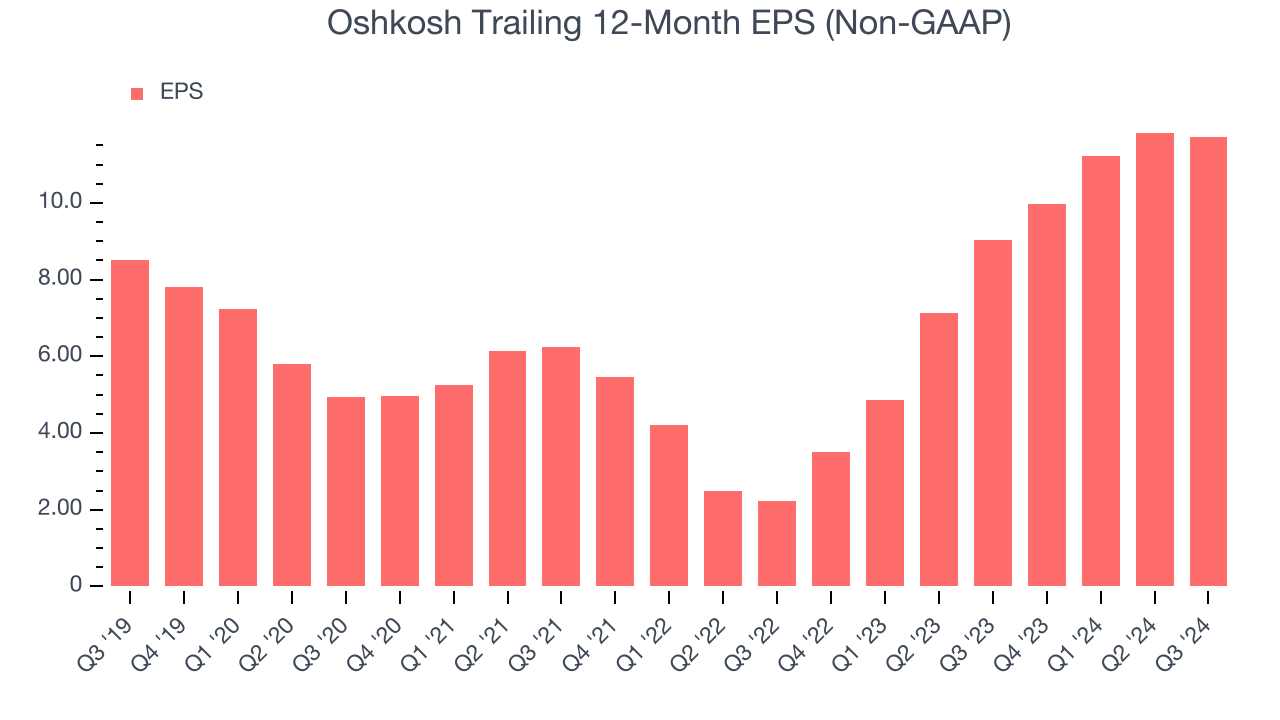
We can take a deeper look into Oshkosh’s earnings to better understand the drivers of its performance. As we mentioned earlier, Oshkosh’s operating margin declined this quarter but expanded by 2.6 percentage points over the last five years. Its share count also shrank by 4.8%, and these factors together are positive signs for shareholders because improving profitability and share buybacks turbocharge EPS growth relative to revenue growth. 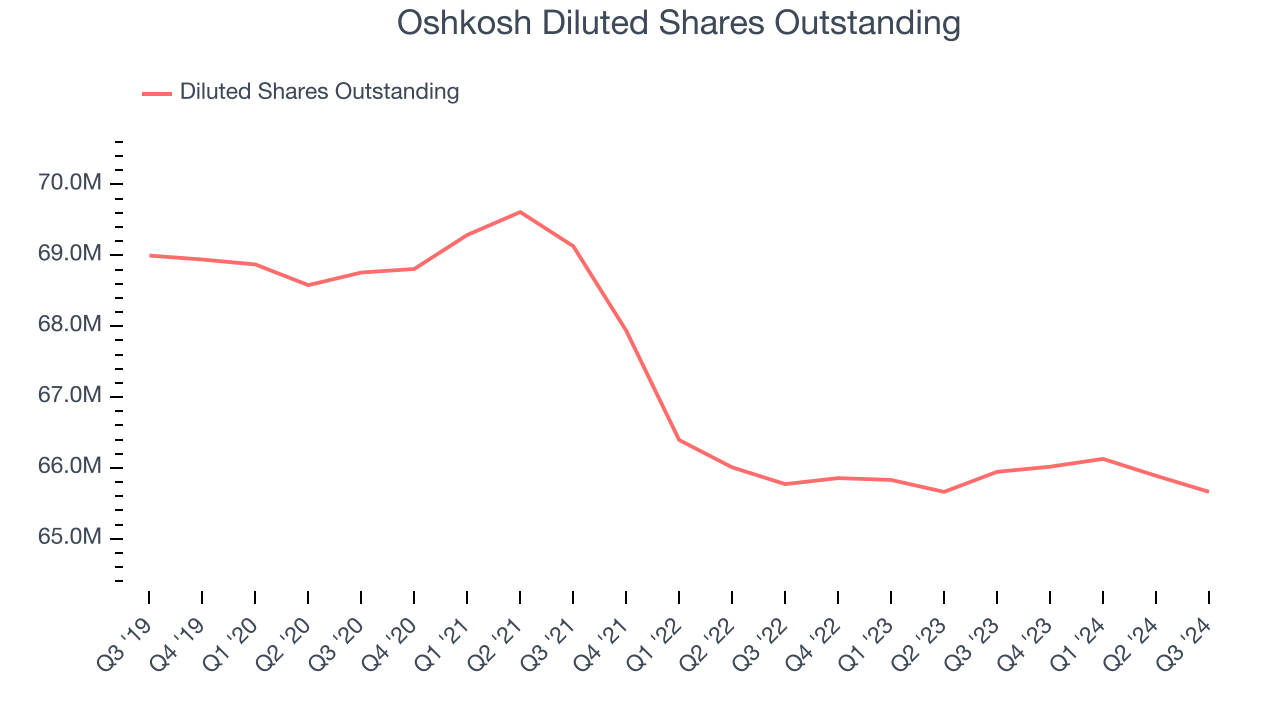
Like with revenue, we analyze EPS over a shorter period to see if we are missing a change in the business.
For Oshkosh, its two-year annual EPS growth of 129% was higher than its five-year trend. This acceleration made it one of the faster-growing industrials companies in recent history.In Q3, Oshkosh reported EPS at $2.93, down from $3.04 in the same quarter last year. This print was close to analysts’ estimates. Over the next 12 months, Wall Street expects Oshkosh’s full-year EPS of $11.72 to shrink by 5.3%.
Key Takeaways from Oshkosh’s Q3 Results
Although revenue beat, EPS missed. Looking ahead, the outlook was underwhelming, with full year revenue and EPS guidance both lowered. This is never a good sign. Overall, this quarter could have been better. The stock remained flat at $106.90 immediately following the results.
Is Oshkosh an attractive investment opportunity at the current price?We think that the latest quarter is only one piece of the longer-term business quality puzzle. Quality, when combined with valuation, can help determine if the stock is a buy. We cover that in our actionable full research report which you can read here, it’s free.













